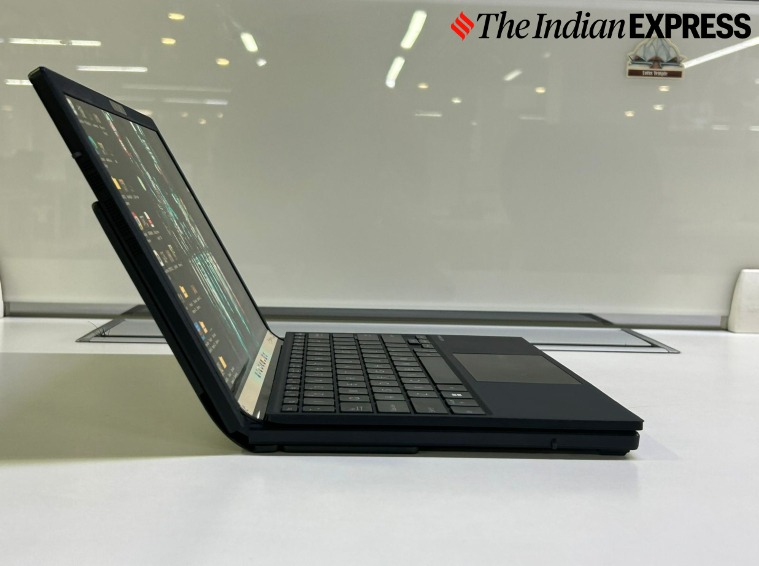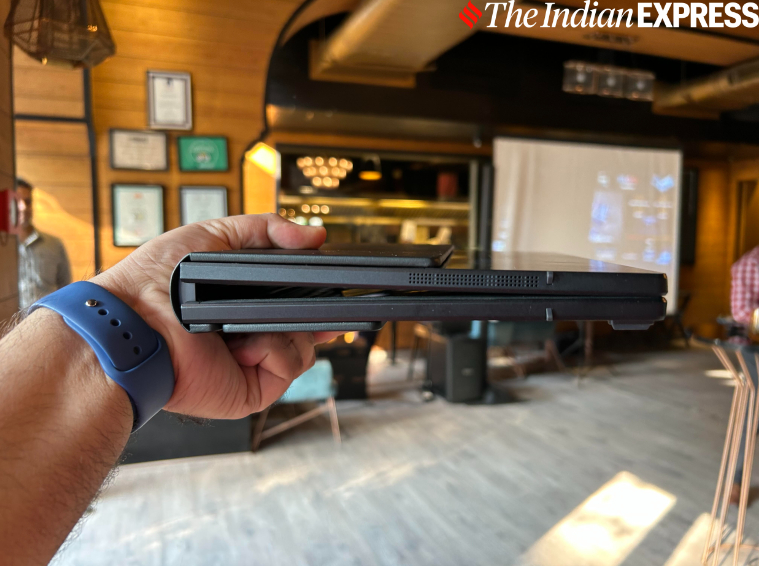Arnold Su, Business Head, Consumer and Gaming PC, System Business Group, Asus India, sees a similar market trajectory for foldable laptops as foldable phones. “If you go back to the foldable phone segment four years back, it was a niche product category, but gradually the market has expanded,” Su told indianexpress.com in an interview
The ZenBook 17 Fold OLED unveiled in India Thursday can do something that other notebooks can’t: bend in half or expand to the size of a 17-inch monitor. The foldable laptop retails for Rs 329,990, a steep price to pay for a notebook when the overall PC market has been declining amid high inflation and broader economic concerns.
While Su admitted that sales volumes for the ZenBook 17 Fold will be low, he said there are customers who can afford a foldable laptop and want to experience a device with a unique form factor. Asus is targeting the ZenBook 17 Fold at frequent flyers, CEOs, and enthusiasts. “The market acceptance will decide the second and third-generation of foldable laptops, but we foresee this might be doable if the panel industry is able to reduce costs,” Su said.
 The ZenBook 17 Fold is small enough to fit in a tote bag or backpack. (Image credit: Anuj Bhatia/Indian Express)
The ZenBook 17 Fold is small enough to fit in a tote bag or backpack. (Image credit: Anuj Bhatia/Indian Express)
Foldable laptops are new to the market, with Lenovo being the first major PC company to commercially launch its ThinkPad X Fold in 2020 after years of teasing. Asus may not be the first with a foldable laptop, but its ZenBook 17 Fold makes some improvements and offers major upgrades over Lenovo’s version. New to Asus’s foldable notebook is a bigger 17.3-inch screen, which is an OLED type under plastic but looks and feels stunning. And, inside the specifications are solid too with a 12th-gen Intel Core i7 U-series CPU, 16GB of RAM, and a 1TB SSD.
Because it uses a foldable screen, the ZenBook 17 Fold can transform into several different devices, including a landscape 17-inch all-in-one PC when you use the built-in kickstand and put the included keyboard in front of it. When folded, it becomes the size of a 12.5-inch clamshell laptop and at 1.5 kg, the device weighs less than a MacBook Pro 14.
Asus’s attempt at a foldable PC is more of a showcase for the new form factor, but even the company admits it. The foldable form factor still has a lot of technical challenges that are yet to be ironed out, but Su said they are at least trying something new to push the needle and offer a new experience that a traditional laptop cannot provide.
Su said a lot of work has gone behind developing the ZenBook 17 Fold. “There were a lot of technical challenges, especially on the hinge side,” he said.
 The ZenBook 17 Fold is still very much a first-generation foldable laptop. (Image credit: Anuj Bhatia/Indian Express)
The ZenBook 17 Fold is still very much a first-generation foldable laptop. (Image credit: Anuj Bhatia/Indian Express)
Taiwan-based Asus, the world’s fifth-largest PC maker by volumes, isn’t shy about trying out new laptop form factors. Over the years, it has put its faith in dual-screen laptops which look like regular notebooks from the outside but have a secondary panel for multitasking inside. “When we launched the first dual-screen laptop, we didn’t know how consumers would accept it. Now more than four years in, we have a dual-screen laptop under a lakh. We see foldable laptops having a similar story as the Duo,” Su said.
Samsung is the largest provider of foldable phones, a category it created. The South Korean giant is estimated to ship more than 10 million foldable phones this year. Right now, the foldable laptop segment is still a niche portion of the overall notebook market, with Lenovo and Asus the only two players eyeing affluent buyers.
Su is hoping the rising popularity of the foldable phone segment will help the market for foldable laptops to develop and eventually bring panel costs down, thus reducing the prices of such devices.
.